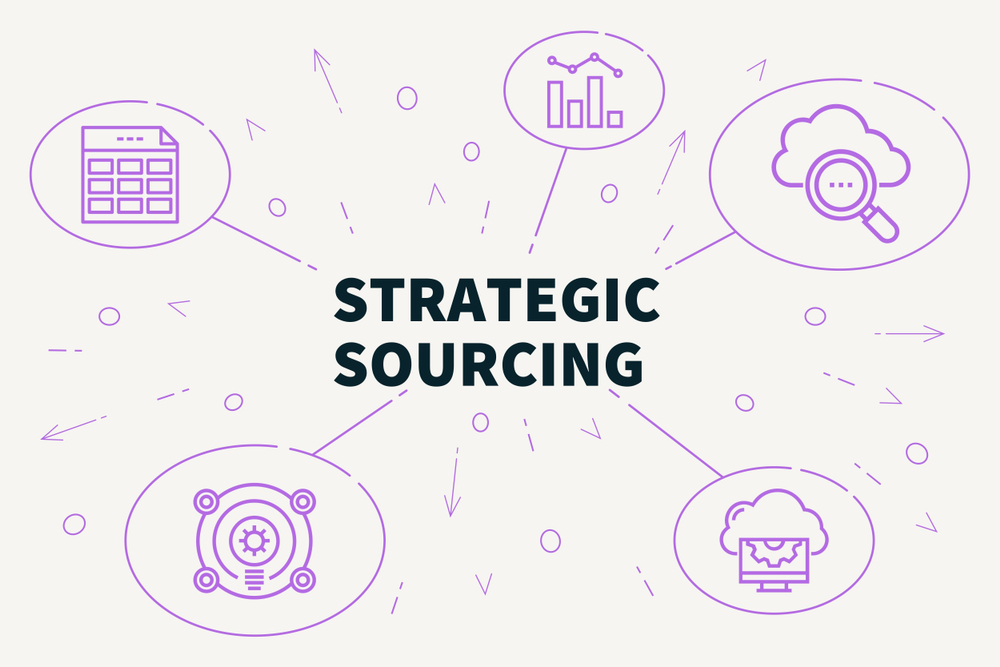For your IT sourcing efforts to be successful, they must be strategic. This requires the proactive exploration of your organizational needs based on a defined business case. In the past, the lowest bid would often get the contract. Today, having a single-sourced partner based on the low bid is less likely to meet an organization’s needs. Collaborative partnerships with IT vendors that deliver real value are a necessity. What are the key components of effective IT sourcing strategies for keeping organizations ahead in rapidly changing markets?
Tactical Vs. Strategic Sourcing — What’s The Difference?
The old tactical sourcing approach meant reacting to a business need by hiring an external vendor, and it is no longer valid in an IT-driven world. These models were typically driven to achieve the lowest possible cost, and many government and enterprise organizations still leverage these frameworks to get the cheapest product quickly. Sometimes it still works, particularly if you’re considering the purchase of a tangible product, such as IT hardware. But digital transformation requires a holistic and strategic approach to define crucial technology partnerships and achieve organizational goals.
Strategic sourcing seeks to define the outsourcing process as a partnership loop. At the front end, strategic sourcing defines business goals and objectives and baselines the IT service and cost enhancements necessary to meet business plans. Finally, business plans and IT baselines are shared with a short list of potential partners. This effort is essential given the level of transparency demanded from consumers. Corporate partnerships are increasingly scrutinized by customers for everything from environmental impact to investment commitments. Your vendor partnerships matter as much to your brand strategy as they do for getting the job done.
At the back end, this effort requires a strategic, adaptive governance program and an iterative approach to evaluating the vendor’s alignment with your strategy. This continuous evaluation process mirrors Agile methodologies that iteratively ask, “Is this right?” and “Does this work?” In this way, strategic vendor outsourcing mirrors the imperative for modern IT partnerships.

Key Components of Strategic Sourcing
Strategic sourcing has some primary benefits over traditional tactical sourcing, including:
- Long-term cost savings over and above one-off “low bid” strategies.
- Alignment of business strategies with sourcing partners.
- Increased likelihood of selecting the right partner every time.
- Long-term partnerships that yield synergistic relationships.
With these goals in mind, what are the components of a strategic sourcing initiative, whether it’s in the supply chain, IT, or some other part of the business?
- Cost Management requires clear understanding of your current IT service and cost. As organizations look to leverage partner capabilities and investments, it’s important to track your current service and cost closely as partnership complexities increase. When coupled with objective negotiation around a strategic, nontactical, goal, you can approach vendors for a better price based on a long-term relationship.
- Solution Design requires a competitive, co-design approach with potential vendors to achieve the best solutions, risk reduction, and risk sharing. Solution design seeks to improve service delivery and cut costs related to your strategic initiatives. With this approach, it is important to retain in-house architecture and design skills to work with potential vendors to design solutions appropriate for your business.
- Adaptive Governance is an approach to managing multiple service suppliers and continuously adapting your relationships as your business changes. As organizations increase their adoption of multi-cloud systems and seek redundant supply chain models, partnership complexities increase — making adaptive governance even more necessary.
The implementation of strategic sourcing requires a long-term evaluation approach to your sourcing options. What steps are necessary to evaluate vendors?

How To Evaluate Your Sourcing Options
Strategic decision-making regarding sourcing options requires an unbiased approach and a consistent evaluation process that often requires assistance from an outside resource. Your process should include:
- A baseline to define and evaluate current services and costs. Use the baseline to determine how relationships contribute to the overarching strategic goals of both department and company.
- Identify selection criteria to govern the vendor relationship management process. Create a vendor service profile that incorporates delivery requirements, governance, and even environmental impact requirements, and diversity, equity, and inclusion goals.
- Investigate the vendor(s) in an iterative process for a high-level solution design in the beginning and adjustments to both vendors and solution as you move through it.
- Understand outsourcing pricing models require a comparative analysis of vendor costs in relation to your baseline. This analysis is customized to your situation, but the benefit justifies the resource allocation necessary for due diligence.
- Develop employee buy-in for this new process. Interdepartmental politics may necessitate a deliberate effort to engage managers in the success of this new initiative. But for strategic sourcing to work, stakeholder buy-in is essential.
For more advice for improving your IT sourcing process, download the CIO’s Guide to Evaluating IT Sourcing Options. Windsor Group Sourcing Advisory works with mid-market and enterprise organizations to improve their strategic and operational efficiency.

